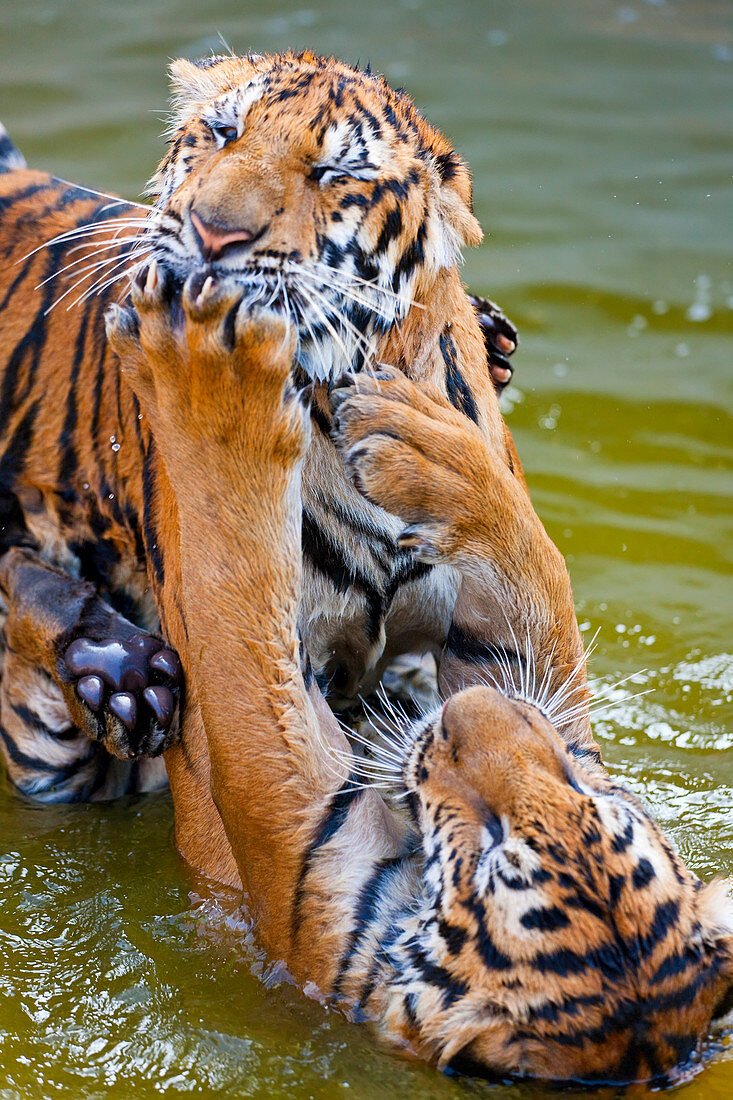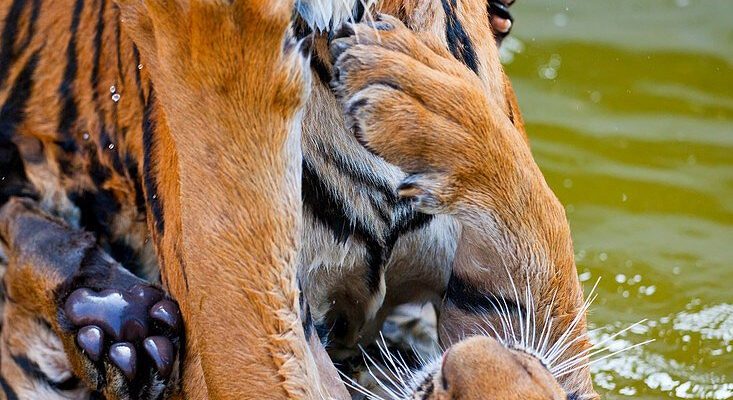
Raising cubs isn’t just about providing food; it involves teaching them crucial skills for survival, socializing, and keeping them safe from threats. Imagine a parent not just giving their child lessons but also teaching them how to navigate the world around them. Indochinese tigers embody this journey. Let’s dig deeper into how these incredible animals raise their young!
The Basics of Indochinese Tiger Reproduction
Indochinese tigers typically reach sexual maturity between 2 to 3 years of age. Here’s the thing: once they’re ready to mate, it’s usually a brief affair. The mating season can occur year-round, but a female will only be receptive for a short time. During mating, couples will often engage in a series of vocalizations and displays to signal their readiness.
After a successful mating, the female tiger goes through a gestation period of about 93 to 112 days. That’s roughly three and a half months! Once she gives birth, she can have anywhere from one to five cubs, though two to three is pretty common. These little ones are born blind and helpless, making their mother’s role crucial right from the start.
Where Do Indochinese Tigers Raise Their Cubs?
Now, let’s talk about habitat. Indochinese tigers prefer dense forests and mountainous areas, which provide plenty of cover for raising their young. Think of these forests as a cozy home, safe from larger predators and human encroachment. When a female tiger decides to give birth, she looks for a secluded den—often in a cave or a hollowed-out tree—to keep her cubs safe from harm.
This den acts like a fortress. Here, the mother can nurse her cubs and begin the all-important bonding process. During the first few weeks, the cubs are utterly dependent on her. The mother doesn’t just protect them; she keeps them warm and nourished until they can venture out into the world.
Feeding and Nurturing the Cubs
Feeding young cubs is a critical part of a mother tiger’s job. Initially, she provides milk, which is rich in nutrients essential for their growth. As they grow, typically around two months old, she’ll begin to introduce them to solid food—often small prey like deer or wild boar. It’s kind of like introducing a toddler to new foods; it has to be done gradually and thoughtfully.
Here’s the thing: teaching cubs to hunt isn’t something that happens overnight. The mother tiger has to be patient and lead by example. She’ll catch prey and then encourage her cubs to play with it, mimicking the motions of hunting. Watching those little ones practice their stealth and pouncing skills is both heartwarming and a little comical.
Teaching Survival Skills
As the cubs grow older, their mother becomes their teacher in the wild. By about three months, she’ll start taking them on short trips outside the den. This is a critical time where they learn how to stalk, chase, and even climb trees—skills they’ll need for survival.
Imagine a coach working with a team; each practice is about building skills and confidence. The mother tiger uses every opportunity to teach her cubs. She’ll demonstrate how to approach prey quietly and use the terrain to their advantage. This is the foundation of becoming a successful predator, which is essential for their future.
The Importance of Social Bonds
One fascinating aspect of Indochinese tiger cubs is their social structure. While tigers are generally solitary animals, cubs have a unique bond with their mother and, sometimes, with each other. This reliance on their mother helps them develop a sense of security.
During their early years, you’ll find the cubs playing together—wrestling and chasing each other. This play is more than just fun; it’s a way to build social skills and learn how to interact with other tigers. You might think of it like a little family gathering, where they learn the importance of teamwork and boundaries.
Challenges and the Role of the Mother
Life in the wild isn’t easy, and Indochinese tigers face numerous challenges. From habitat loss to poaching, these beautiful creatures are under threat. When it comes to raising cubs, the mother bear the weight of these dangers. She must hunt to feed her little ones while simultaneously keeping an eye out for predators, which could include other tigers or humans.
Mother tigers are known for their fierce protection. If she senses danger, she’ll move her cubs to a new location or hide them until the threat passes. It’s a heart-pounding part of motherhood that highlights her instinct and resilience. It’s a reminder that nurturing often involves navigating obstacles.
When Do Cubs Fend for Themselves?
Indochinese tiger cubs usually stay with their mother for about two to three years. During this time, they become proficient hunters themselves. As they approach independence, the mother will gradually reduce her direct care, encouraging them to venture out on their own.
You might be wondering what happens next. Once the cubs reach about two years old, they’ll start exploring territories of their own. This transition is a bittersweet moment; the mother’s job is largely complete, but it also signifies a new beginning for the young tigers as they establish their presence in the wild.
Raising cubs is a remarkable journey for Indochinese tigers, filled with lessons of survival, nurturing, and resilience. From their intimate playscapes in the den to their first hunts in the wild, every moment shapes these tiny creatures into the majestic animals they’ll become.
In a world full of challenges, the mother tiger showcases dedication and strength, ensuring her young are well-prepared for the complexities of life. So, next time you think about tigers, remember the beautiful bond that exists between a mother and her cubs and the extraordinary lengths she goes to raise them in the wild.

